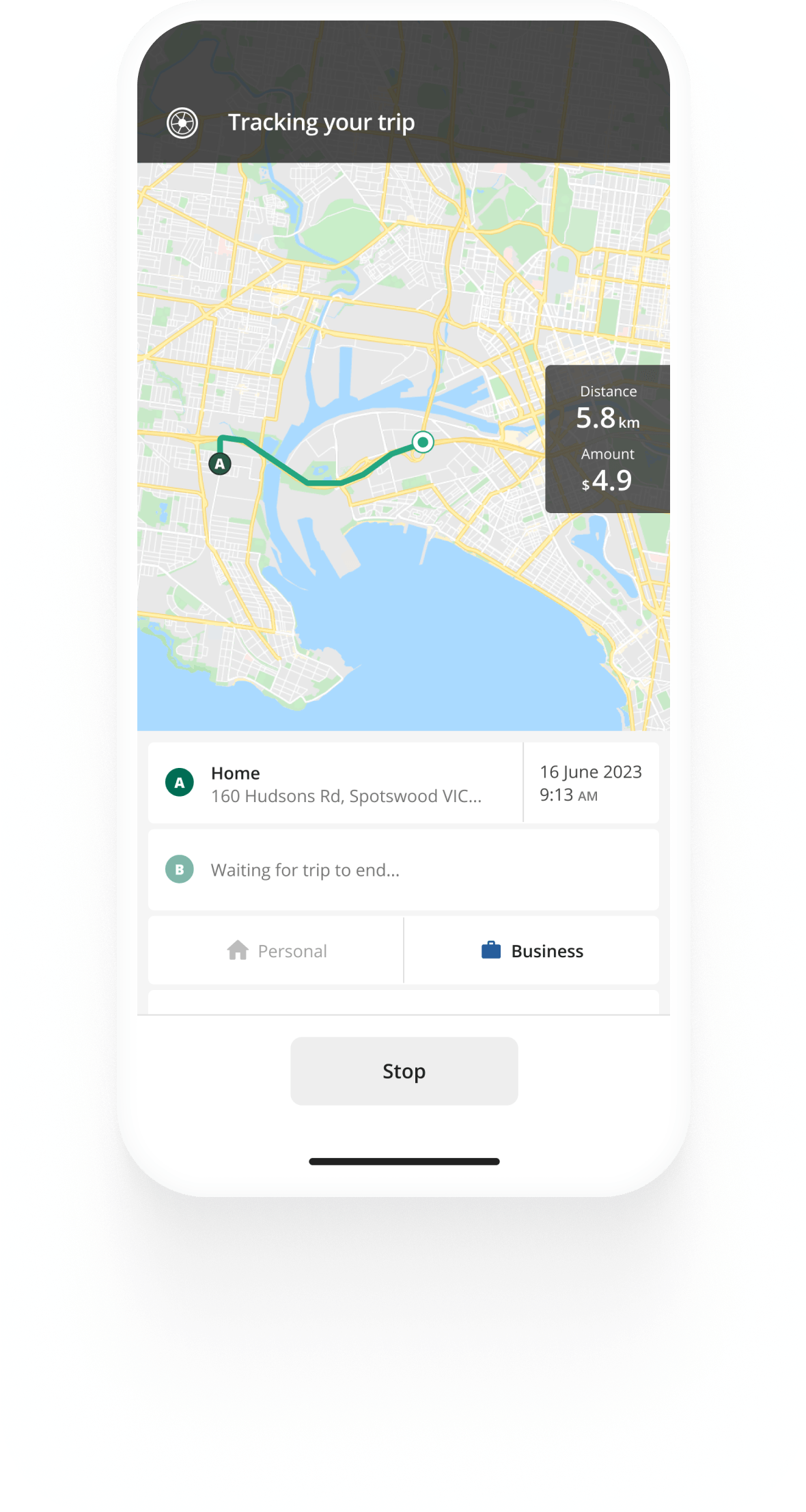Track mileage automatically
Get startedWork-related Car Expenses for Employees
Employers will often reimburse employees as they incur work-related car expenses for business-related driving. While employers can decide themselves how to reimburse these expenses, they do follow rules set by the ATO you should also be aware of.
The car allowance and the cents per kilometre method
Your employer will likely use one of these two methods of reimbursing you for your work-related car expenses. They differ in their types of compensation and payout structure.
Car allowance
If you get an ATO car allowance from your employer, it needs to be shown on your payment summary, as allowances are considered taxable income. You can use the allowance to purchase a vehicle, keep it for expenses associated with your current vehicle or spend it in any other way you see fit. The car allowance offers employees the highest level of flexibility when it comes to spending it.
When you receive a taxable car allowance, you can still deduct your business-related driving expenses at your tax return. The deduction is meant to cover the costs of running your vehicle, such as fuel, oil, tyres etc.
In case you are not reimbursed for the car operating expenses, you can claim them from the ATO on your annual tax return. You will be able to use either the cents per km method or the logbook method to deduct your eligible work-related car expenses. Read more about deducting motor vehicle expenses from the ATO.
The administrative burden of paying an allowance and accounting for all expenses afterwards can be cumbersome for a company. Instead, many employers provide a cents per kilometre rate as reimbursement. Under a cents per kilometre reimbursement arrangement, you are reimbursed at a specific rate for each kilometre you drive for business.
Why is car allowance taxable?
Car allowances are taxable because they are considered an employment benefit. You don't need to provide proof of kilometres you've driven for work to receive it, and can use it as you see fit e.g. it is not a justified reimbursement to remain untaxed.
What tax do you pay on car allowance?
Car allowance is a benefit included in your income statements or payslips, and is taxed at your income tax rate.
The cents per kilometre reimbursement
The simplest mileage reimbursement arrangement is to use a flat rate per kilometre driven. It is supposed to cover all work-related car expenses. That's what the ATO’s rate does; it is meant to cover both the costs of owning (fixed costs) and driving (variable costs) your vehicle for business-related travel.
Keep in mind that your employer can set any rate they like - they do not have to use the ATO’s rate. For rates higher than the ATO’s standard per kilometre rate, the excess is taxed as part of your income.
The cents per km 2025 rate is 88 cents, applicable for the 2025/2026 tax year. Read more about what the ATO cents per km rate covers.
There's a lot to be said for using a standard rate, chief among them that it's simple and avoids a fairly big administrative burden.
The vehicle you use
If you use your own car (including a leased or hired car under a hire-to-purchase agreement), you can claim all work-related travel expenses from your employer or on your tax return. The two most common methods for employee reimbursement are a cents per kilometre rate or a car allowance.
If you use someone else's vehicle, i.e. a company car for work purposes, you will be able to claim only the actual expenses you have covered for operating the car (such as fuel, maintenance and parking) as a work-related travel expense from your employer or on your tax return. You won’t be able to use the cents per km rate, as it accounts for the cost of owning a vehicle.


Kilometre tracking made easy
Trusted by millions of drivers
Automate your logbook Automate your logbook

Automatic mileage tracking and ATO-compliant reporting.
Get started for free Get started for freeHow to log information for your work-related car expenses
There are no exact requirements for how you keep track of travel as an employed individual. Your employer might require you to use a certain method or provide certain records, and they need to inform you of it. A lot of people have to choose for themselves.
However, if you claim work-related car expenses from the ATO on your tax return, you need to adhere to the requirements for a logbook based on the method you use.
Most people use a mobile application to both track their trips and generate reports for them. Other alternatives are spreadsheets, like Excel or Google Sheets, that you can share with your manager and/or accountants, but then you might need to take down odometer readings every trip to figure out your mileage accurately.
Will your mileage reimbursement be taxed?
This depends on how your employer processes your claim.
- If your employer provides an allowance for car expenses, this would be taxed as it is considered a benefit and needs to be declared as income.
- If your employer reimburses your specific car expenses and they are taxed as a part of your income, you can claim these as a deduction in your tax return.
- If your employer reimburses your specific car expenses and these are not taxed, you cannot claim a deduction as you have already been fully reimbursed by your employer.
FAQ

Tired of logging mileage by hand?
Effortless. ATO-compliant. Liberating.
ATO Mileage Guide
- For Self-Employed
- For Employees
- For Employers
- The Cents per Kilometre Method
- The Logbook Method
- ATO Log Book Requirements
- Claim Car Expenses In 5 Simple Steps
- Calculate Your Car Expenses Reimbursement
- ATO Car Expenses Deductions
- Car Fringe Benefits Tax
- Is Mileage Reimbursement Taxed?
- Historic Cents Per KM Rates
- ATO Cents Per KM Rate 2021/2022
- ATO Cents Per KM Rate 2020/2021